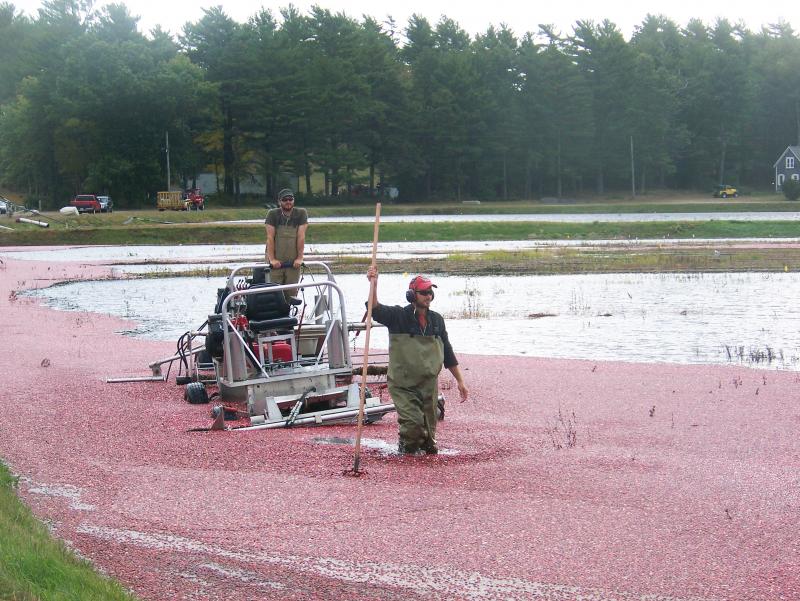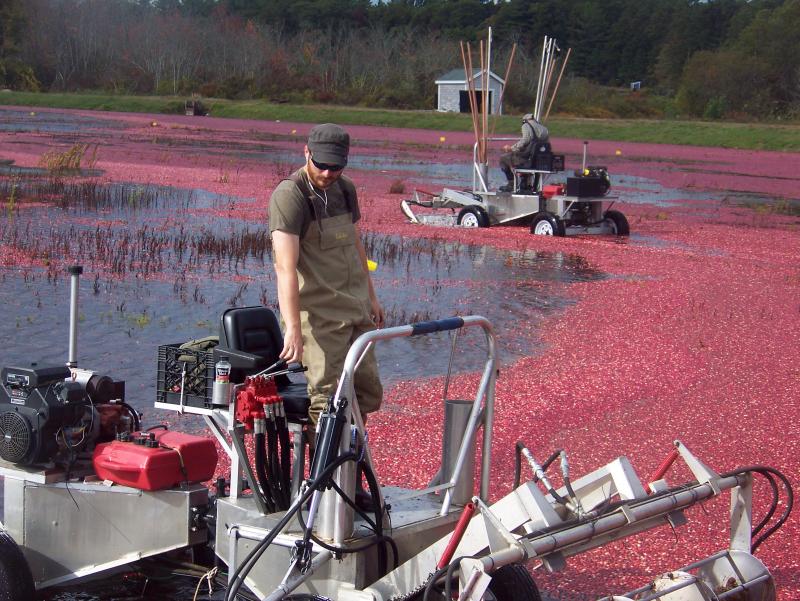Canadian cranberry growers close gap on Massachusetts harvest
Kirby Gilmore of Rochester is looking north this cranberry harvest.
While Massachusetts has long been associated with a robust cranberry harvest, second only to Wisconsin in the U.S., a growing cranberry powerhouse north of the border is proving to be competition for the state’s growers.
“We used to be number two, but this is the first year that growers in Quebec are close to having a larger harvest than Massachusetts,” said Kirby Gilmore of Rochester.
Gilmore is a second-generation cranberry grower who owns bogs in Rochester and Carver. He’s been harvesting with his company Gilmore Cranberry for the past 36 years.
Quebec’s cranberry industry was practically nonexistent two decades ago. Since then, Canadian growers have solicited advice from U.S. cranberry growers and offered financing incentives to expand.
Because of that, Quebec is expected to yield approximately 1.8 million barrels.
But Massachusetts’ growers have plans to increase production in the coming years, said Gilmore.
A new, higher-yield variety of cranberry plants will be introduced to area bogs to boost the number of barrels harvested.
“We’re expecting to tear up the bogs,” Gilmore said. “Once we replant, we’ll be able to compete better with Canada.”
In Massachusetts, the cranberry harvest begins in October and ends in late November.
On a recent morning, Gilmore worked to harvest a bog he owns in Carver.
The majority of cranberry growers use a “water harvesting” technique. After the bogs are flooded, a harvesting machine is used to knock the berries loose from their vines.
Gilmore’s son, Cass, and Ben Richard worked alongside Gilmore on the harvesting machines.
In an adjacent bog, a crew from the Rochester-based company Souza Cranberry worked to collect berries.
A hollow fruit, the berries float and are easily collected from the bogs by a “water reel.”
The reel hauls the cranberries up to be separated from leaves and other natural debris. Inside the reel, a spray nozzle provides an initial rinse before they are loaded into a truck and transported to Ocean Spray in Carver for further processing.
There, the fruit is prepared into juices, jellies and other products. According to Ocean Spray, about 80 percent of a season’s crop is eaten in North America, with the remaining amount shipped overseas. In North America, 20 percent of the harvested berries are eaten during the week of Thanksgiving.
About 200,000 barrels of Ocean Spray’s 2014 harvest will be sold as fresh cranberries, while the rest of the fruit will be processed into beverages, dried cranberries, sauce and other products.
Recently, Ocean Spray Cranberries, Inc. issued a 2014 global crop projection between 11.2 and 11.6 million barrels. That estimate is slightly less than last year’s 12 million barrel yield – a record breaking year for the crop.
In Massachusetts, the United States Department of Agriculture predicts that approximately 2 million barrels of fruit will be harvested, down slightly from last year’s 2.12 million barrels. Each barrel weighs 100 pounds.
While the cranberry industry is in good shape, Gilmore said it’s been harder for him to recruit part-time help as skilled harvesters are becoming older.
“The average age of a cranberry grower in the state is about sixty years old,” Gilmore said. “Not as many young people are getting into the business.”
















